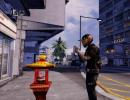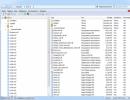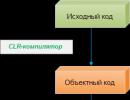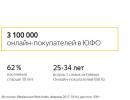Why doesn't the flash drive show up? How to recover a flash drive if it is unreadable
When you connect an external USB drive or flash drive, it will immediately appear in Explorer (my computer) and will be displayed as a local drive. However, sometimes when you connect a USB flash drive to a computer, the drive may not appear in “my computer”, this also applies to SD and microSD memory cards. If the flash drive is not showing up in File Explorer, you can try the solutions below to enable your external drive in File Explorer again. Before testing these solutions, I recommend unplugging the flash drive, rebooting your computer once, and plugging the flash drive back in to see if it shows up in This PC.
Adding a drive letter to an external drive
- Press a combination of buttons Win+R and enter diskmgmt.msc to enter disk management.
- In the "Disk Management" section, check if your external drive (flash drive) has a letter. If there is a drive letter, it will appear next to the drive name as shown in the image below. If there is no letter, you will need to follow the next steps.
- Right click on the flash drive that you want to see in My Computer Explorer, and then click " Change drive letter or path".

- Click the button Add. When you click the "Add" button, a dialog box will open " Add a drive letter"or"Path". As you can see in the image below, Windows 10 automatically assigns a drive letter to the selected flash drive, but you can choose your own letter by clicking the down arrow next to the drive letter. Click OK to complete the process.

Show empty drives in My Computer
A parameter in the folder properties can restore the display of the flash drive to “my computer”. The option is used to hide empty drives in Explorer.
- Open My Computer. Click File, then Options.

- Go to the tab View And remove tick Hide empty disks. Click apply, if the flash drive does not appear even after the above solutions, try connecting it to another computer and check if it appears there.

Hello everyone dear friends! One of our visitors had a very interesting problem after upgrading to the new Windows 10 operating system.
The problem was that when connecting any portable device media, such as a flash drive or hard drive, Windows simply did not see it.
It is worth noting that this problem also occurs with earlier versions of Windows 7/8/8.1.
Today we will try to figure out this problem and help not only our friend, but also everyone else who has a similar situation.
Windows does not see the flash drive - reasons
So, let's first figure out what could be causing this problem.
There are four reasons in total:
- In Windows, the USB port driver is installed incorrectly or the driver is disabled;
- Inoperative/defective USB port in the case itself;
- Incorrectly installed drivers for the flash drive itself;
- The flash drive is simply broken (its physical body is damaged);
- The flash drive was formatted incorrectly.
Let's look at each of the reasons separately.
Problems with port drivers
Of course, first you should check what exactly the reason is: in the flash drive or in the computer.
To do this, you should try several different ports. If, after connecting to at least one of them, the flash drive appears, then the problem is in the PC. If not, then the problem is with the flash drive itself.
You can also verify this by going to disk management. You can enter this section of the management console by pressing the Win+R key combination and entering this code without quotes into the window that appears: “diskmgmt.msc”.
If, after opening Disk Management, you see that the removable disk is displayed in the program, then most likely there is a problem with the media itself.
 You should definitely try connecting the flash drive to another computer.
You should definitely try connecting the flash drive to another computer.
What to do if the flash drive is not seen by any port?
You should make sure that the ports are enabled and the drivers are installed correctly.
To do this, open the Taskbar, find Hardware and Sound there, and in the “Devices and Printers” section select Device Manager (there is another way: Win + R and enter devmgmt.msc).
After opening Device Manager, we are interested in the “USB Controllers” tab. All devices on your PC that are responsible for accepting the connected USB device will be shown here.
 If you see a circle with an arrow pointing down next to at least one of the icons, this means that this device is not turned on.
If you see a circle with an arrow pointing down next to at least one of the icons, this means that this device is not turned on.
 Right-click on it and select “Engage”. For example, as a Bluetooth radio module.
Right-click on it and select “Engage”. For example, as a Bluetooth radio module.
 If you see a yellow triangle next to the icon, this means that the driver is not working correctly or is missing altogether.
If you see a yellow triangle next to the icon, this means that the driver is not working correctly or is missing altogether.
 In this case, you will have to use the standard driver update and installation assistant.
In this case, you will have to use the standard driver update and installation assistant.
First you should try updating the drivers. To do this, right-click and select “Update drivers...”.
 If the program says that no drivers were found, then you will have to look for the drivers yourself on the website of your motherboard manufacturer.
If the program says that no drivers were found, then you will have to look for the drivers yourself on the website of your motherboard manufacturer.
If, after all the above steps, you find that one of the ports still does not work, then the problem is probably that the port’s contacts have simply come off the motherboard (the result of careless handling of the computer).
In this case, you will have to take your computer to a service center or technician so that he can solder you a new USB port.
Problems with flash drive drivers
Now let's move on to the point of flash drive driver curves. Here you should do the same thing as with the USB port.
You can also update the driver from the “Disk devices” subsection.
 But first, try formatting the flash drive. This can really help.
But first, try formatting the flash drive. This can really help.
WE WARN that all information on the USB drive will disappear (erased), so you perform all actions at your own peril and risk.
So, go to disk management (reminder: Win+R> diskmgmt.msc). Right-click on the removable disk and select “Format...”. We select the FAT32 file system and the default cluster size.
 In the volume label field you can enter anything: this will be the name of your flash drive in the future.
In the volume label field you can enter anything: this will be the name of your flash drive in the future.
If quick formatting does not help, try unchecking this box. The process will take longer, but deeper.
Now let's move on to reinstalling the flash drive drivers.
Without hesitation, immediately go to the official website of the manufacturer of your flash drive and download the driver for it (usually the drivers are on the Support tab).
When you start installing the driver, you may be asked to remove it first (or maybe reinstall it right away). Do this first, and then install the driver again with the same program.
Checking the drive for errors
This can be done using the built-in capabilities of the operating system.
Right-click on the USB drive and go to the “properties” section.
 Go to the “Service” section and click “Run check”.
Go to the “Service” section and click “Run check”.
 Check two boxes and click “Run”.
Check two boxes and click “Run”.
 After completing the check, click “Close”.
After completing the check, click “Close”.
Find out the VID/PID of your flash drive
If the computer still does not recognize the flash drive, then most likely there is a problem with the data located on it.
When you connect a new device, the computer saves all the data about it in the registry, but sometimes registry cleaners try to fix a registry that is already working normally.
We should delete the value of the flash drive in the registry. To do this, press Win+R and enter regedit in the field.
We press Enter and the registry menu pops up in front of us.
 We look for these two branches in the registry:
We look for these two branches in the registry:
- HKEY_LOCAL_MACHINE\SYSTEM\CurrentControlSet\Enum\USB;
- HKEY_LOCAL_MACHINE\SYSTEM\CurrentControlSet\Enum\USBSTOR.
 In these branches, you should delete all folders whose names contain VID/PID. VID is the manufacturer ID and PID is the device ID.
In these branches, you should delete all folders whose names contain VID/PID. VID is the manufacturer ID and PID is the device ID.
 If you know the VID and PID of a specific broken flash drive, you can delete only the corresponding folder.
If you know the VID and PID of a specific broken flash drive, you can delete only the corresponding folder.
Deleting these folders will not affect the operation of the USB drive in any way, but the computer will try to read its data again when connected.
You can find out the VID/PID of your Flash memory using a Chinese program such as ChipGenius or its simpler analogue CheckUDisk.
 These programs can detect device data even if it is not recognized by the computer.
These programs can detect device data even if it is not recognized by the computer.
Mechanical damage and ways to eliminate it
If this does not help you, and the Flash drive is not recognized by any of the ports or computers, then the problem is probably that the device is simply broken.
This is due to careless handling of it (everyone likes to sharply pull it out of the port).
You can repair the device if you have seen the circuit board of an object at least once in your life.
If you have no idea what the inside of a flash drive is, then I advise you to contact a special workshop.
Many such workshops are equipped with special devices that allow you to access the memory of a Flash drive (correctly called a “memory chip”) and thus read data.
Well, if you have at least some idea about repairs, then you can get started. We will be repairing the USB “plug”.
You will need a soldering iron, wire cutters, a knife and a screwdriver. A magnifying glass would also be useful, because everything on the board is very small.
So, first, unwind the device and remove its contents. Look carefully at the board.
 If you see even one scratch, you can immediately take it to a special workshop, because there will be no point in repairing it.
If you see even one scratch, you can immediately take it to a special workshop, because there will be no point in repairing it.
If you do not find any irregularities, then you can move on.
Now you should take the old unnecessary wire with a USB plug. Cut the wire a few centimeters from the plug. There will be 4 wires.
 Strip them about half a centimeter apart. Solder the wires to the board. To do this, position the flash drive so that its plug is facing you, and the two square holes in the plug are directed upward.
Strip them about half a centimeter apart. Solder the wires to the board. To do this, position the flash drive so that its plug is facing you, and the two square holes in the plug are directed upward.
Now we solder the wires to the contacts in strict order from left to right: black, green, white, red. If you solder incorrectly, the device will burn out.
 Now insert the soldered plug into the computer, and if the computer detects the flash drive, then instantly backup your data.
Now insert the soldered plug into the computer, and if the computer detects the flash drive, then instantly backup your data.
 In the future, you will no longer be able to use this drive and will have to buy a new one.
In the future, you will no longer be able to use this drive and will have to buy a new one.
If the computer does not recognize the device, then in this case it should also be taken to a specialist.
D-Soft Flash Doctor program
Another reason may be that the USB drive was incorrectly formatted or formatting was interrupted.
In this case, the computer will recognize the device, but will ask you to format it.
D-Soft Flash Doctor can help here. The software is very convenient, does not require installation, and you can find it on the Internet. The program is absolutely free.
 Flash Doctor looks for errors on the Flash drive bypassing its drivers and fixes them.
Flash Doctor looks for errors on the Flash drive bypassing its drivers and fixes them.
The utility can also burn disk images (in case you need a bootable USB flash drive).
Essentially, this utility formats the drive, but as if mistaking it for a regular Plug’n’Play device. After formatting, the device should work.
Recovering lost files
If for some reason you accidentally deleted files from your flash drive, then several programs can help you. One of them is Undelete360.
 It can recover files, but only if the USB drive has not been formatted.
It can recover files, but only if the USB drive has not been formatted.
Another program, CardRecovery, can only recover files from flash drives. You shouldn't expect more from her.
 Another program is PhotoRec. Only professionals can use it, as it is completely Command Line based.
Another program is PhotoRec. Only professionals can use it, as it is completely Command Line based.
 But there is also a plus program that works very quickly and restores any formats.
But there is also a plus program that works very quickly and restores any formats.
And finally, everyone's favorite data recovery giant - Recuva from Piriform.
 The program is pleasing to the eye and even a novice PC user can understand it. In addition, it is free and there is a version in Russian.
The program is pleasing to the eye and even a novice PC user can understand it. In addition, it is free and there is a version in Russian.
If nothing helps you, then there is only one thing left to do - throw out the flash drive and forget about it, because after so many attempts to restore it, taking it for repairs will cost more than buying a new one.
We hope this instruction helped you. And one more tip: always create backup copies of data from USB drives. See you again!
The computer does not see the flash drive. Technology cannot work forever. There may be several reasons:
1) the front connectors on the PC are not connected to the motherboard;
2) there is not enough food;
3) system driver failure;
4) viruses;
5) file system conflict;
6) hardware failure of the drive.
Almost all problems can be “treated” with improvised means, namely computer system utilities. Let's look at each breakdown in detail.
Reason 1: Inactive sockets and lack of power
If your flash drive does not open on your computer when connected to the front connectors of the system unit, additionally check the jacks for connecting a headset (headphones).
If they are silent, it means that the manufacturers did not bother to connect the socket block to the motherboard when assembling the PC. If the computer is under warranty, feel free to complain to the seller about poor quality assembly. Alternatively, use the rear ports.
The second nuance is insufficient power supply to the connectors, which is why the flash drive “blinks”, i.e. randomly recognized/disappears. Most likely, the assemblers are to blame for screwing up when connecting them to the system board, not completely recessing the cable into the corresponding groove.
In this case, you again need to visit the service center or seller. But if you have experience building a PC, try doing it yourself.
If after all the manipulations absolutely nothing happens, the problem lies elsewhere.
Reason 2: drivers
Each flash drive initially stores a driver in memory, which is automatically installed when the device is connected. But Windows can periodically crash, causing the average user to suffer. To correct the situation, the following set of manipulations will be required.
To begin, right-click on “My Computer” and go to “properties”.
A list of several tabs will be displayed, from which you need to select “Hardware” and go to “Device Manager”.
Scroll through the list until we find USB controllers. We expand the list by clicking on “+” and see the complete list of devices that are connected or have once been connected through the required connector.
Next, you will have to play the so-called attentiveness test. We connect the drive and wait until the list of drivers blinks. One of the components will change its name. This is our culprit and must be eliminated.
To do this, right-click on it and select “Delete”. Confirm your intentions, and then reinsert the flash drive. The driver will be picked up automatically. In the vast majority of cases this helps.
Reason 3: viruses and trojans
Although the system requires checking devices for spyware, few people do this, and they pay for it by causing the system to malfunction. It’s very simple: the virus replaces the “native” autorun driver with a modified one, which can result in the message “Access denied” appearing.
Therefore, if the flash drive does not boot , we do the following.
Open “My Computer” and enter the device letter in the address bar (everything is as in the screenshot, preserving the characters). Your drive letter may vary.
So, you got inside. But now you need to make hidden files visible in order to get to autorun. To do this, select “Service”, and from the list that opens, select “Folder Options”.
We are interested in the “View” tab. Scroll the slider to the very bottom until you find the “Hide system files...” setting. We remove the checkbox from this item, simultaneously switching the system to the ability to show hidden files.
Have you checked? Great. Re-insert the long-suffering device and continue working.
Reason 4: Partition conflict
Other incidents also happen. For example, you inserted a drive into your computer. The system recognized him and issued the corresponding “tyn-dyn.” A characteristic icon has appeared on the taskbar at the bottom, but for some reason Windows refuses to assign a partition letter. How to deal with this?
To get started, click Start and go to Control Panel.
On the left side of the window, for ease of use, select “Switch to category view.” Although if it is already turned on, there is no need to perform any manipulations. We need to get into “Administration”.
Important: all manipulations must be done only on behalf of the administrator. Otherwise, the system will not accept the changes.
Select “Computer Management” by double-clicking and move on.
Here is the “reverse side” of the system with various settings. Do not under any circumstances engage in ad-libbing if you do not understand it. Just follow our advice.
The computer does not see the flash drive - there is a solution.Hello. Your The computer does not see the flash drive , memory card or hard drive and you are wondering what to do? Surely every computer user has experienced a similar situation, or even more than one.
Today I will help you with this issue. I’ll tell you what problems there are with displaying usb devices and how to solve them. By the way, the last article was about data recovery from a flash drive. If you are interested in this, then replenish your knowledge.
Your computer does not see or detect the flash drive, hard drive and memory card. Let's look at the possible reasons for this situation. At the end of the article, do not forget to watch a visual video lesson on how to make a flash drive or hard drive work.
A short outline of the article
- Device Definition
- Power indicator
- Front USB ports
- Not enough food
- USB disabled in BIOS
- USB device not recognized
- Outdated drivers
- Viruses
- Different file systems
- Conclusion
Determining the device
The first step is to determine exactly how the computer does not see your USB drive. From this answer it will be clear whether it is possible or not.
To do this, you need to go to Windows Device Manager.
In order to enter it, you need to right-click on the my computer shortcut on the desktop or in the start menu, go to properties, click on device manager.
After that, select disk devices.
We got to the device manager and the disk devices tab. If your flash drive or memory card appears in this list, then it is highly likely that you can recover data on it. If there is no flash drive there, then the memory card controller is most likely burned out. I recommend trying to connect your USB device to other computers.
If nothing changes and the flash drive is still not visible, then the problem is probably a faulty controller. It’s unlikely that you will extract data from such a USB device; you can, of course, contact special institutions that do this (they are not in all cities), but they will charge you a tidy sum for the work. So think about whether you need it or not.
Your flash drive is visible as a device, but it does not appear in my computer or Explorer, or asks to be formatted. To do this you need to go to disk management. To get into it you need to perform the following steps. Here are screenshots for clarity:
The device is displayed, writes its volume and file system - it is ready for use and functions normally.
The device is displayed, shows its capacity, but does not display the file system and writes “not defined”. In order to use it, you need to right-click in the Not Defined window and select Format. You can check the quick formatting box and click OK. After the device is formatted, it should work in normal operating mode.
Displayed as a removable device, says no media and does not show the file system. All these parameters indicate that this device is not working properly, there is internal or external damage to the controller. You can hardly read information from such a flash drive without special expensive equipment.
Power indicator
When you connect the flash drive to the computer, a small indicator on the USB device should light up. If it lights up and starts blinking, then everything is fine with the flash drive, but not with the operating system, you need to look for the reason in it. If the flash drive indicator does not light up, then the problem may be in the device itself or the connected port of the computer.
Front USB ports
There have been cases when a flash drive is connected to a computer via the front USB ports, but the flash drive does not work. Perhaps these front usbs are turned off or they forgot to connect them to the motherboard.
Not enough power
Power shortages mainly occur when connecting hard drives through the front USB ports of the computer, hubs and hubs. It is best to connect such devices directly to the USB connectors on the motherboard, that is, at the back of the computer. If you use a USB hub or hub, then disconnect unnecessary devices, this may help. The reason may also be a low-power computer power supply.
USB disabled in BIOS
This problem is rare. Mainly in computer clubs and similar entertainment establishments. What is it for? To prevent a person from introducing viruses and downloading various programs and unnecessary information onto the computer. This is more of a protective measure. If this is a home computer, then you need to go to the settings and check the box to enable the launch of usb devices in the motherboard.
USB device not recognized
The usb device is not recognized and when you connect a flash drive, the operating system gives it an already used letter (volume label in use). This does not always happen; there are other cases. In order to fix this you need to go to the computer control panel.
I showed how to enter it above, or you can open the Run window - the keyboard shortcut Win + R (the checkbox between Ctrl and Alt plus the letter R) and type the command diskmgmt.msc. Go to disk management, find the desired device - a flash drive, right-click on it and select Change drive letter or drive path. In the window that appears, you can add or change this letter.
Outdated drivers
It is possible that your drivers are outdated - update them. To do this, you need to find out what manufacturer and model of your motherboard is. Usually written on the packaging box, if you saved them, of course. If not, then use the Everest or Aida program. Using them, you can find out the model of your motherboard and a lot of other useful information about your computer. After you have found out everything, you need to go to the manufacturer’s official website, find the required motherboard and download drivers for the chipset and usb device, if there are any.
Viruses
There have been cases where the computer does not recognize the flash drive due to viruses that have appeared in your operating system. To do this, I recommend using good anti-virus programs and doing a full virus scan at least once a month. If you don't have it, you can use a free antivirus, or purchase a paid product.
Different file systems
This happens, but very rarely. Your computer does not see the flash drive due to a conflict between the file systems of the computer and the flash drive. Most flash drives work in two file systems: FAT and FAT32, and hard drives work in NTFS.
You can try formatting your flash drive in a different format such as FAT32 or NTFS. Maybe after this everything will work fine.
Helpful information. On a flash drive in FAT and FAT32 format, you can upload information in one file of no more than 4 Gigabytes, and on a hard drive much more. Therefore, if you encounter such a problem, be prepared for it and keep it in mind.
And for dessert, watch a short video tutorial on how to make your computer see a flash drive and hard drive. For convenient and enjoyable viewing, I recommend watching this video in full screen, that is, in full screen mode.
The computer does not recognize the flash drive and hard drive
Almost everyone uses USB flash drives now. This is a simple and reliable way to transfer and store information. But the malfunction of these devices has become a common problem for many users. Below are all possible causes of problems and options for resolving them.
First, simpler and more effective ways to solve the problem will be described, so you should follow the recommendations in order. But do not forget that some problems, such as severe physical damage, cannot be eliminated.
Reasons why the system does not recognize the device
To operate a USB device, it has a built-in special controller. If there is a certain failure, it may become blocked, which will prevent the computer from recognizing the flash drive.
The reason for the failure may be a power surge, sudden removal of the flash drive, incorrect formatting, etc. Violations of this type can still be corrected, but in case of mechanical or thermal damage, it is impossible to restore the operation of the flash drive.
You can understand that the flash drive is not detected by the computer by the following factors:
- The USB device is connected, but the computer says “insert disk”;
- The message “Device connected, not detected” pops up;
- issues a request to format the flash drive;
- a data reading error message appears;
- The indicator on the drive is on, but it is not displayed on the computer, etc.
The cause of the failure may also be:
- non-working computer USB ports;
- outdated drivers;
- viruses on the device;
- settings failures in BIOS;
- different file systems of the USB device and computer;
- assigning the letter of the connected hard drive to the flash drive, etc.
Driver check
First of all, you need to check whether the driver is installed correctly on your computer.
To do this, go to “Disk Management”:

Now try removing and inserting the USB device and see if it appears in this window. If the flash drive is visible and the status is indicated as “Good”, right-click on it and select “Make partition active”.
If there is a problem, the status will show "Not allocated", "Not initialized" or "Unknown", which means that the device is damaged.
The system may assign the wrong letter to the flash drive, which will also prevent it from being recognized. Right-click on the device and select "Change Drive Letter" and assign a different value:

The flash drive driver itself needs to be checked in Device Manager:
- start;
- control Panel;
- device Manager.
If the driver for the flash drive is not installed, yellow question marks will appear next to one or more USB devices.
Computer hardware errors
When the PC does not detect a new flash drive, insert it into different USB ports. If all ports are operating normally except one, the cause of the problem is a problem in that port.
The same problem can arise when connecting a flash drive not directly, but through a USB hub or extension cable. Try connecting the device directly to the USB port. If everything works, then the adapter is the cause.
It happens that many devices are connected to the computer via USB, then the ports may not have enough power to operate the flash drive. Disconnect other devices from the ports one at a time, leaving only the mouse and keyboard. If the USB drive now works, then the problem is due to lack of power.

In this case, it is better to install a more powerful power supply or USB hub with a separate power source. But if the size of the flash device is very large, older laptop models simply will not handle its power. With this option, it is almost impossible to solve the problem.
Another problem is the heating of the connected USB device. The malfunction may be a short on the device board.
You can check this on another computer - if it continues to heat up, then the USB drive is faulty. And if everything is fine in other places, then the computer port itself may short out.
If the flash drive and USB port are working properly, the indicator on the device will light up. Then the cause of the problem is systemic, not hardware.
Video: Recovering a flash drive that is not recognized by the computer
Virus check
Then why is the flash card seen by the computer, but not read? One reason could be a virus that infects the boot file of the USB drive. Because of this, the device either does not boot at all or is immediately blocked by the antivirus. And if it is displayed, it displays a warning “Access denied” when you try to open it.
First of all, you should destroy the infected boot file “autorun.inf”. To do this, enter the address of the flash drive in Explorer (for example, G:/):
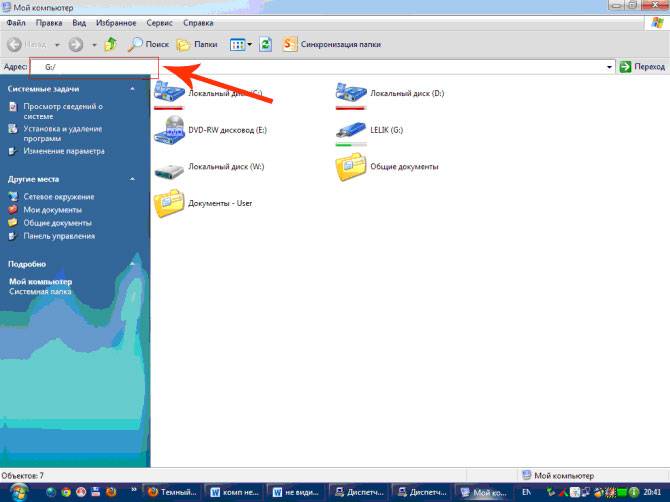
- "Service";
- "Folder properties";
- "View";
- “Hidden files and folders”;
- "Show hidden files and folders."
The download file will now be displayed. It must be removed and data from the entire device scanned with an antivirus.
If the flash drive does not open through Explorer, use the command line:

Setting up USB in BIOS
The flash drive may not be recognized due to USB ports being disabled in the BIOS. This happens very rarely, but it's best to check your settings just in case. Please note that no device will be recognized in a disabled USB port, so if others work fine, then skip this step.
To enter the BIOS, restart the computer and press the Del or F2 button while turning it on. Different PCs may have different keys, so look at what is written on the screen (approximately “Press F2 to enter Setup”). If a blue table with settings opens, then everything is correct - you have entered the BIOS.
Now you should find the menu item in which the inclusion of USB is regulated. Its name may vary, but most often it is the Advanced (Peripherals, Integrated Peripherals) tab:

In it, look for the item USB Configuration/Controller, etc. There are a lot of BIOS menu options, so it’s quite difficult to specify the exact item. But the word USB must be present. Now make sure that USB support is “Enabled”, if not, then switch them:

Some BIOS versions not only regulate how the controller turns on, but also indicate its operating mode - V1.1 or V1.1+V2.0 (there is already 3.0). Choose the option that supports all directions (V1.1+V2.0). Save the settings and exit the BIOS (most often the F10 key).
USB drive is not detected by the system due to errors
After formatting, which may not have been entirely successful, the operating system may not see the flash drive due to errors. This can be checked in the “Disk Management” item, the entrance to which was described above. If the flash drive says “Good”, but it is still not visible in Explorer, the cause may be a formatting error.

This can be eliminated by new formatting. Right-click on the device and select “Format”. The flash drive should now display and work without errors.
Different file systems of flash cards and computers
To restore the operation of a usb flash that is not detected on the PC, you need to change the file system, which may cause a conflict on the computer. The file system of the latter is most often NTFS, while the flash device is FAT32. In the Disk Management window, you can see the file system types of different PC media.
Correct formatting solves the problem. For this:

In the window that opens, check the compliance of the specified capacity and the parameters of the flash drive. Specify the file system as NTFS and check the box next to “Fast (cleaning table of contents)”. Now click “Start”:
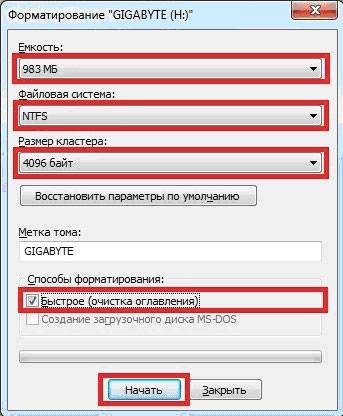
Confirm your actions:

After the process is completed, the system will notify you:
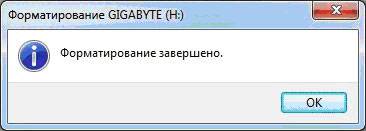
Required OS updates for operation
When Windows XP is installed, the flash drive may not be recognized due to outdated updates required for its operation. However, some flash drives can work in PC USB ports, while others cannot.
The main updates required for normal operation of USB devices:
- KB925196 – incorrect recognition;
- KB817900 – port operation stops after the device is removed and reloaded;
- KB968132 – errors when connecting several flash drives;
- KB88740 – Rundll32.exe error;
- KB895962 – stops the USB device after turning off the printer;
- KB871233 – the flash card does not work after the PC wakes from sleep or hibernation;
- KB314634 – support only older USB devices;
- KB312370 (2007) – USB 2.0 support.
Recovery methods
When no problems are found with the system, you can use special recovery programs:
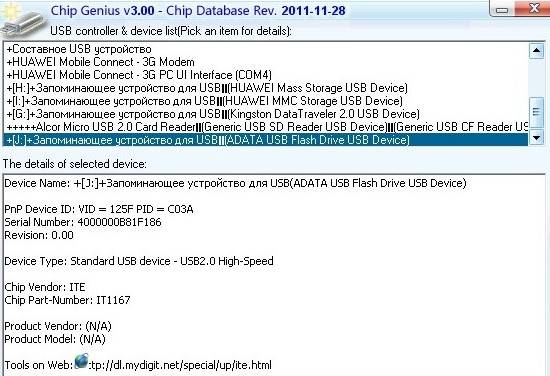
- ChipGenius – determines the manufacturer and other information about the device;
- AlcorMP – reflashes usb flash controllers from most manufacturers;
- JetFlash Recovery Tool – reflashes flash drives from Transcend.
If your computer says "Insert disk" when booting, the problem may be outdated drivers that should be removed.

For this:
- When the computer is turned off, disconnect all USB devices (except the mouse and keyboard);
- turn on the PC;
- download the DriveCleanup program;
- Depending on the OS version, copy the 32-bit or 64-bit “drivecleunup.exe” to the C:WindowsSystem32 folder;
- go to the command line and write “drivecleunup.exe”;
- drivers will begin to be uninstalled:
After this, restart your computer. Insert the flash drive and the system will find new drivers for it.

A flash drive may not be detected for many reasons, the main of which are a malfunction of the device or USB port, as well as system errors, most of which can be eliminated by correct formatting and installing drivers. Some programs can also help restore USB flash, so you should follow the instructions in order.
>







